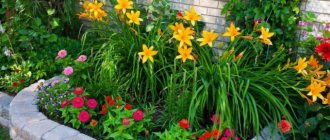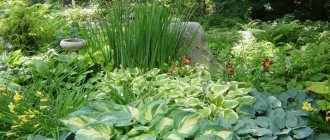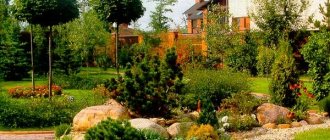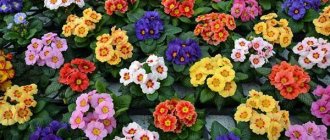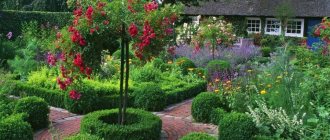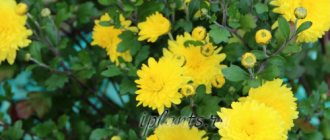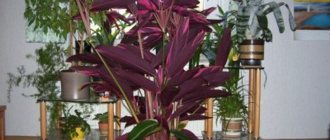Ornamental gardening is now of increasing interest due to the desire to create a beautiful green area around your home. The laws of landscape design dictate certain rules. The right combination of flowers and plants is one of them. Man always strives for nature, he is tired of the bustle of big cities, he wants his house to be surrounded by nature and green lawns. But so that the elements of the garden and square are not chaotic, but pleasing to the eye and create a mood, they need to be organized. Landscape design deals with this task. It has its own laws. One of them is taking into account the rules of natural harmony and compatibility of various floristry objects, i.e. the right combination of flowers and plants when creating an individual landscape for a site.
Setting up a continuous flowering garden
Every owner wants his garden to have flowering plants almost all year round. How can this be achieved?
There are certain rules here:
- The site of the future flower garden is divided into small areas with different seedlings in each of them. Moreover, such a combination is provided so that the flowering time of different plants in each segment does not coincide, i.e. one flower fades and the other blooms.
- To ensure continuity of flowering in the garden from March to November, it is necessary to have enough space on the site to plant a large number of plants. It should be taken into account that, depending on the size of the plants, from 2 to 10 bushes can be planted per square meter of flower bed. Therefore, to solve the problem of creating a continuously blooming oasis, it is necessary to have an area of at least 2-3 square meters.
- A big difficulty when creating a blooming garden is the compatibility of plants and taking into account the various features of caring for them. For example, for good flowering, bulbous plants require fertilizing with nitrogen fertilizers, and rhizomatous perennial plants, when there is an excess of nitrogen, grow to the detriment of flowering. In addition, bulbous, early-blooming flowers fade when perennials are just preparing to bloom. And digging up bulbs after they bloom can damage neighboring plants, which will affect their flowering. Therefore, it is preferable to plant bulbous plants that do not require generous fertilization and annual digging.
- Perennial flowering plants do not always have time to bloom at the time when the primroses fade, because they need a certain time to take root on the site. Therefore, it is good to plant annuals between early flowering and perennial plants, which will cover the fading primroses and bloom the flowerbed. Such flower garden rescuers include pansies, forget-me-nots, and daisies.
- It is also necessary to take into account that not all plants harmoniously combine the attractiveness of the flower, the beautiful shape of the leaf and the colorfulness of the greenery. Therefore, it is necessary to correctly arrange various flowers so that some “cover up” the shortcomings of others.
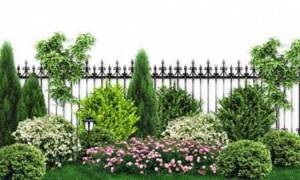
Multicolor in the flowerbed
A flowering meadow makes an indelible impression. Do you want to repeat it in your garden? Keep in mind that the area of a single flower bed is small compared to natural spaces, so combining a dozen shades on it at once is a mistake; you will end up with a variegated look that is difficult and unpleasant to look at. Therefore, take the most interesting bright accents and do not forget that the planting should carry meaning, have a basis; everything grown interspersed will not produce anything other than a catastrophic disorder.
Important! Plants with simple colors are suitable for meadow-type plantings. Complex ones (like pansies) will get lost in the general pile.
When planning your meadow, do not forget about the difference in height of individual varieties. They should be approximately the same, or plant the plants in tiers so that the taller ones do not interfere with the shorter ones.
Related article:
12 best perennials
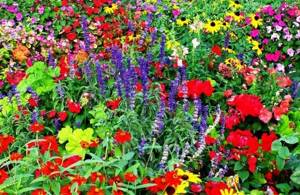
298
Correct composition of colors
- Colors - competent planning of color combinations on the site is of no small importance. With a large range of colors present in the garden landscape, it is important to maintain moderation and not overdo it. Harmony must be maintained simultaneously in the color, shape and size of plants so that they evoke pleasant associations.
- Flower beds for a relaxing holiday have pastel colors; such corners are usually combined with gazebos and benches. Contrasting flower beds are diluted with soft, calm tones (pink, lilac); they are created in somewhat shaded places. Monochromatic color combinations that include several different plants that differ only in the richness of their colors look good. In this case, plants of more intense color are planted in the center.
- When creating compositions of the same color scheme, the emphasis is on the plant with the most saturated color, other plants only complement it. When combining cold and warm colors in a flower garden, you need to ensure their gradual transition, for example, from blue to yellow through purple, pink, cream shades.
- When choosing flowers, you need to keep in mind seasonality, transformation of color and plant growth. In the warm season, the color scheme is dictated by the color of flowers, leaves, and fruits. In winter - only the color of roots and branches. There is no need to lose sight of the overall picture of the site, where flower beds, lawns, and ponds can serve as a backdrop for trees. When focusing on flower beds, trees, on the contrary, should fade into the background.
- The harmonious combination of colorful plants and their distribution taking into account their illumination allows you to create a real work of design art. It evokes a feeling of peace, balance and tranquility.
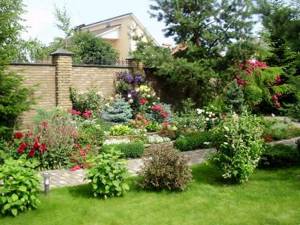
The advantage of a tandem of vegetables and flowers
In addition to the unconditional decorative value of a vegetable garden, it should be noted that ornamental flowering plants are necessary for the successful growing season of vegetables. Many will want to dispute this statement, but the truth is that, indeed, the benefits of such a neighborhood are enormous. With flowering plants, a heady aroma and protection from insect pests will come to the vegetable bed. Flowers are a source of pollinating insects, for which all vegetable crops will definitely say “thank you” during the flowering period, since the abundance of bees and other pollinators will help increase and improve the quality of the harvest.
So, how to choose the right flowers, group them with vegetables in order to get the benefits and pleasure from planting together - let's figure it out
Coniferous compositions
Coniferous plants are often used in landscape compositions, this is understandable, because they not only get along well with each other, but also live in harmony with deciduous trees and shrubs.
To create such combined corners, there are certain rules:
- Coniferous species are well planted with cereals, shrubs and flowers, incl. lilies near the pond.
- They look good against the backdrop of weeping deciduous trees.
- Lawns are a good backdrop for evergreens.
- They look great next to roses, but the waste products of coniferous plants acidify the soil, and roses do not like acidified soils.
- If there are three types of plants in the composition, then there should be only two of their shades.
- Five-element areas can include no more than three color shades.
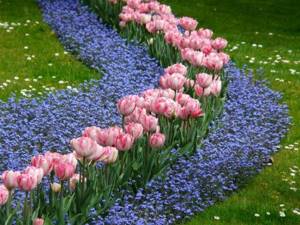
We recommend learning about a plant called poultry plant.
Advantages of joint flower and vegetable plantings:
- the area of the site is used rationally;
- different plant requirements for the soil do not deplete it;
- the right crops have a beneficial effect on each other.
Let's look at what combinations of plants there are in a garden bed.
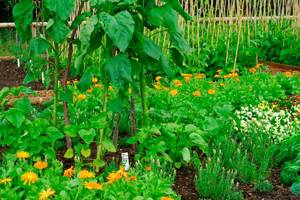
Bright flowers decorate vegetable beds and at the same time improve the composition of the soil
Queen of flowers in landscape compositions
Roses are one of the most beautiful and popular flowers in the garden. How to correctly combine roses with other plants, not downplaying, but emphasizing their beauty?
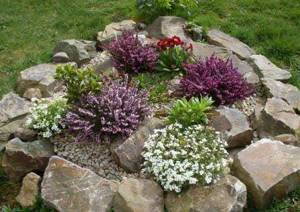
Here are some tips for creating a composition that includes the queen of flowers:
- When planting flowers, it is better to surround them not with other flowers, but with greenery, which will create the desired background without distracting attention to itself.
- It is wrong to plant several varieties of roses next to each other. It is better to surround it with more modest neighbors or place many plants of the same variety nearby.
- Large flowering shrubs should not be planted next to the rose; they will distract attention. The best option is a small bush with silver leaves.
- Roses look good next to evergreens. Among them, it is better to choose low spruce, fir, and pine trees. Roses in such a composition are the focal point, the needles give the flower a special sophistication and exclusivity, serving as an excellent background, favorably emphasizing its rare beauty.
- Next to boxwoods, the rose looks like a highlight. This combination is very common in European rose gardens, and boxwoods are given a wide variety of shapes. For the winter, this shrub must be wrapped together with rose bushes, because... he doesn't like low temperatures.
Drawing up landscape compositions is a whole science that includes floristry, coloristics, allelopathy, agrochemistry, aesthetics and others. We recommend reading the article about the prairie garden.
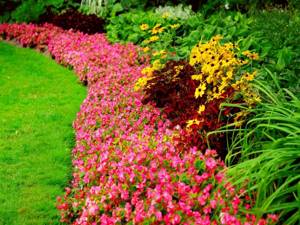
Here you need to take into account the comparability of plants according to various characteristics - compatibility, size, color, shape, growth and flowering conditions.
But a living picture should also delight you with the change of colors, create a positive mood, help you relax and unwind.
And combinations of plant odors should not cause allergies or headaches.
Therefore, landscape design that takes into account all these and many other features of wildlife is so important for everyone. You can read an article about the features of designing a site in country style.
Secrets of a luxurious flower garden: what combinations are the most successful
When planning flower beds for our garden, we want to get compositions of extraordinary beauty and color. For joint planting, it is important to choose the right partners so that they complement each other and look harmonious and holistic. We will tell you in more detail how to do this during our lesson.
Let's find out all the secrets of a luxurious flower garden
You remember from the first lesson that the main thing when selecting plants is compliance with environmental conditions and planting style. These frames give you the opportunity to choose from a certain number of types. To begin, make a list of selected plants and group them by flowering time, then you will understand when and which flowers will form the decorative basis of your composition.
Play of colors on the site (20 photos)
Multi-tiered flower garden
Tall pink and white roses form the “top floor” of the flower garden, accompanied by foxgloves in matching tones. As your gaze drops a little lower, you notice the irises. In May, during flowering, irises add color to the garden, and the rest of the time they create a background for other plants. At the very bottom there can be bushes of boxwood, geranium, mantle and salvia.
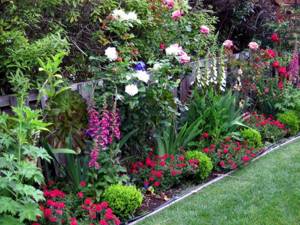
A beautiful flower garden of foxgloves. In the garden, tall varieties of foxglove are often planted in the background of flower beds. All other, lower plants are placed against their background:
- tulips
- bergenia
- Brunner
- astilboides lamellar
- foxglove (low-growing varieties)
These plants have large, showy leaves and work well with the vertical lines created by foxgloves. A rich range of colors makes it possible to create a flower garden in your favorite colors. This combination of flowers and plants is typical for free group planting in a natural garden.
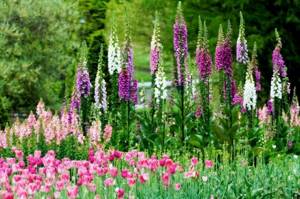
Garden for the whole year
To make the garden attractive not only in the spring-summer season, but also pleasing in the winter, be sure to plant several coniferous and evergreen plants. They will be the base of your garden. Between these plants, place your favorite perennials and beautiful flowering shrubs that will color the flower garden with bright colors from spring to autumn.

This approach not only makes it possible to revive the garden in winter, but also to change its appearance at will, planting other perennials and annuals between the conifers.
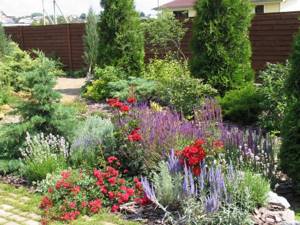
Knowing of limits
You shouldn't plant too many different types of plants in a small garden. Of course, once you get the hang of it, it’s hard to stop, because each plant is beautiful in its own way. A sense of proportion should tell you at what point to stop.
We advise that for a small flower garden, choose two or three beautiful plants that match each other in foliage color, size and flowering time. It will be a stylish and worthy composition that will bring aesthetic pleasure.
Bright green thuja, white panicle hydrangea and scarlet rose form the basis of this lovely little garden.
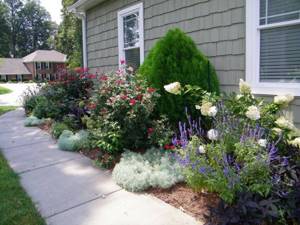
Bright accent - focal point
In one of our articles we already talked about the importance of creating focal points in the garden. One such accent could be an exquisite ceramic flowerpot or a group of bright containers with picturesque plants. For example:
- geranium
- alyssum
- lobelia
- nasturtium
- petunia
In such a flowerpot or container group you can also plant indoor plants, which will happily grow in the fresh air throughout the spring-summer season:
- ivy
- agave
- cacti
- chlorophytum
- fuchsia

